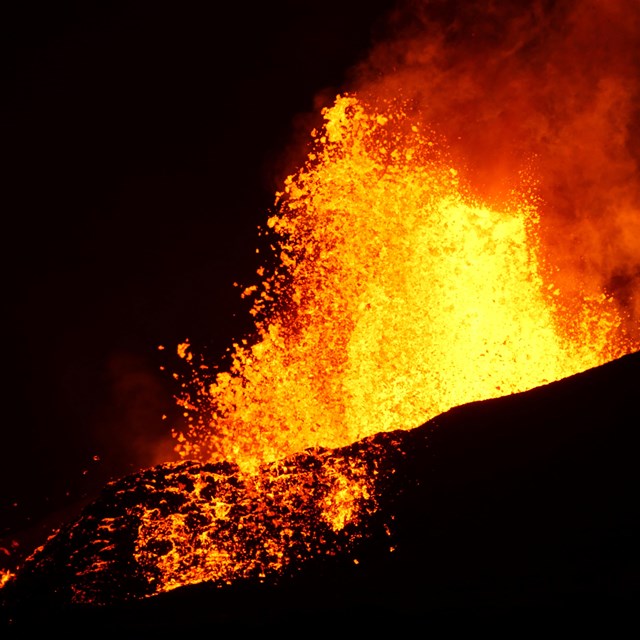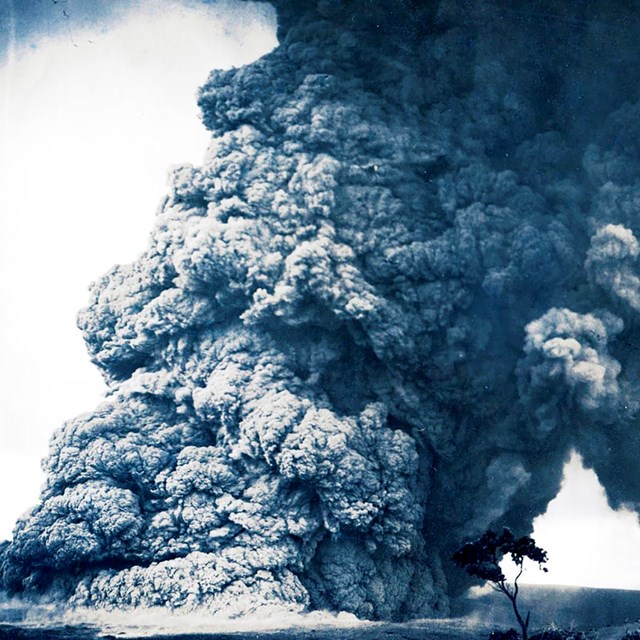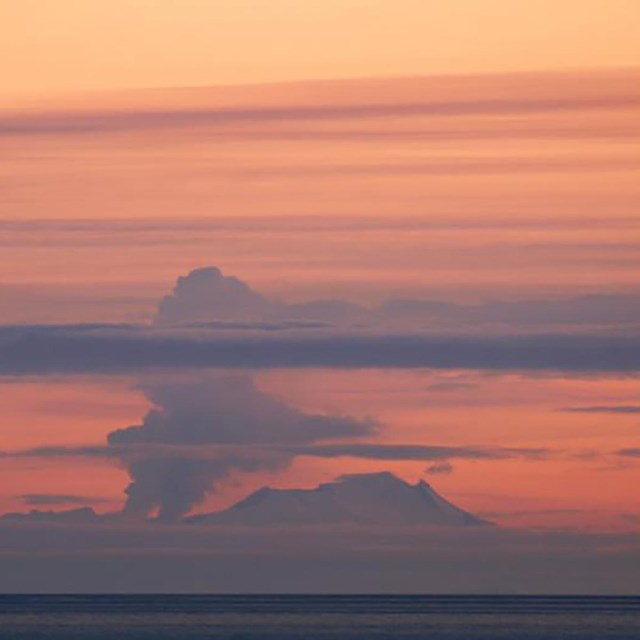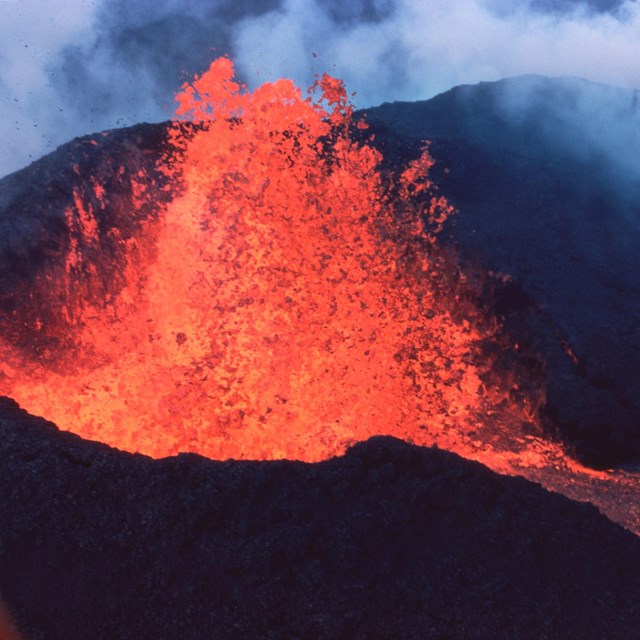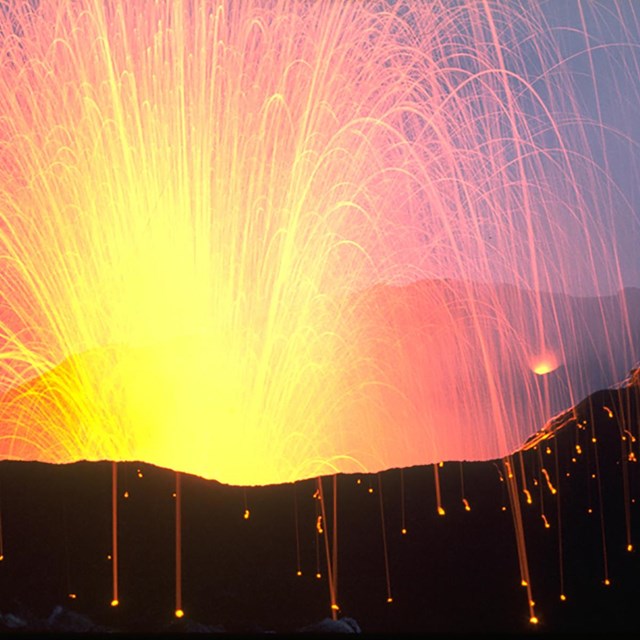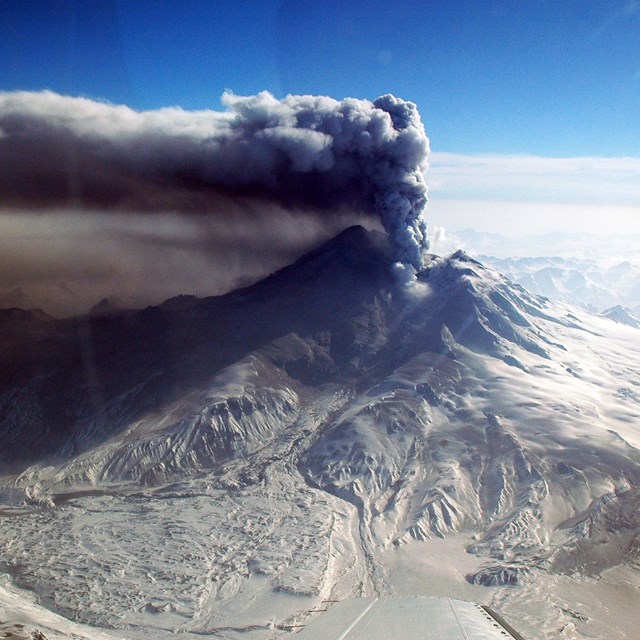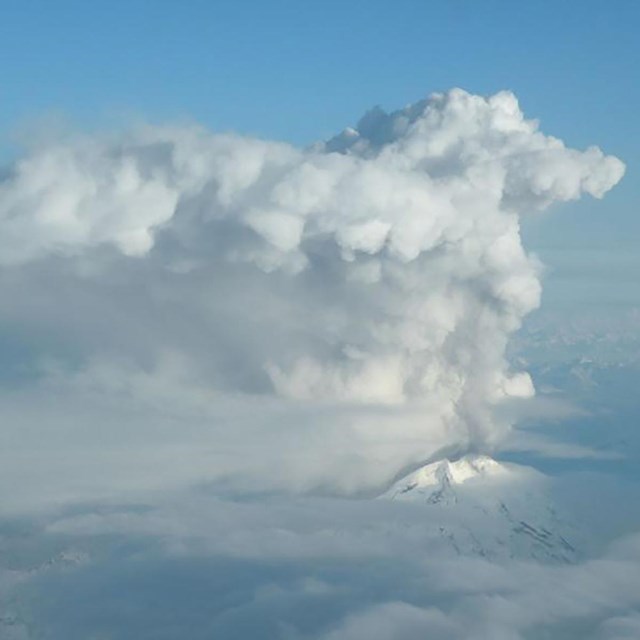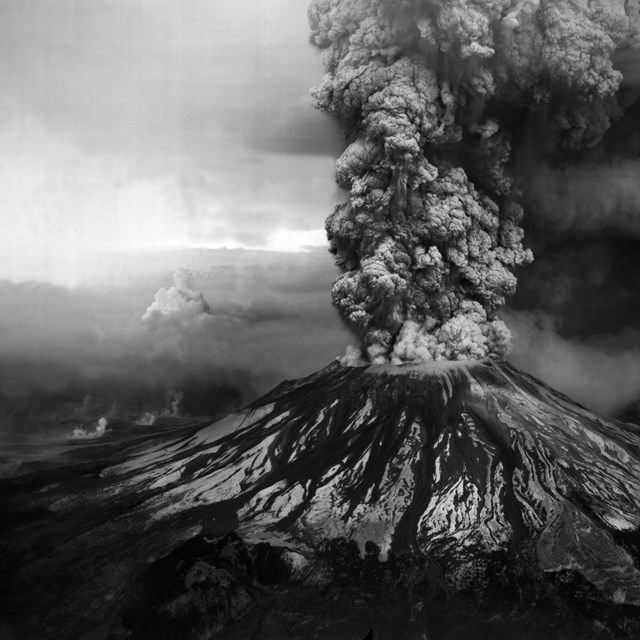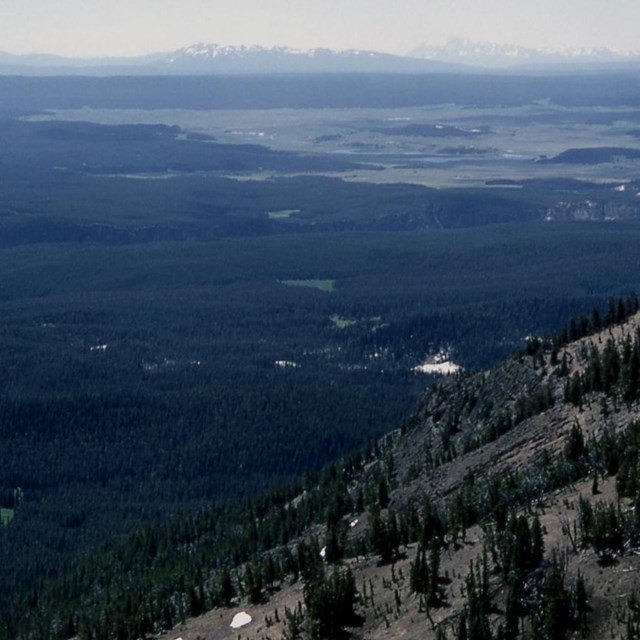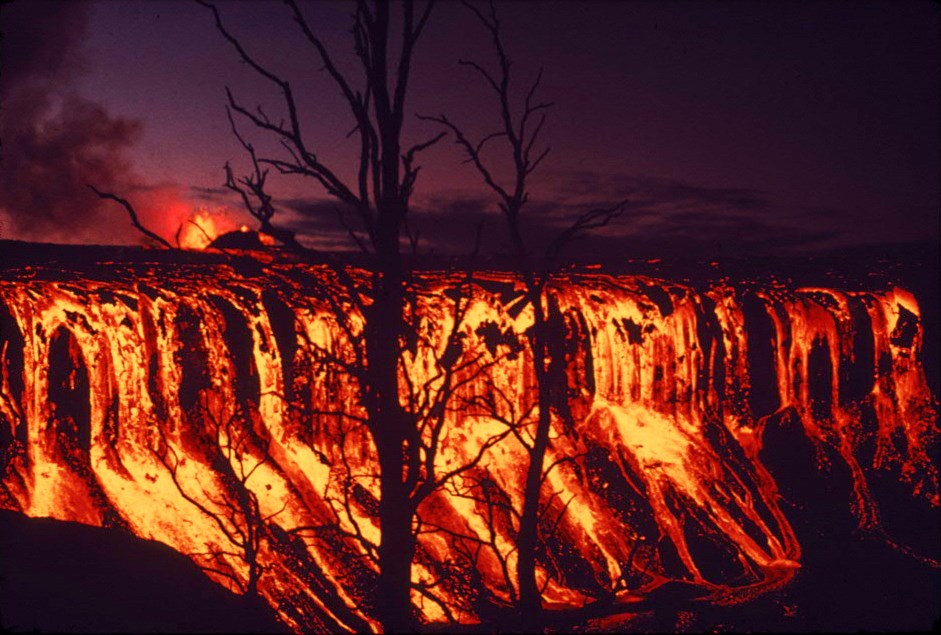
USGS photo by D. Swanson.
Introduction
Volcanoes can display a range of eruptive phenomena. Some eruptions are propelled only by steam explosions, while others eject so much material that the ground above the magma chamber collapses above it. Volcanic eruptions may consist of quiet emissions of fluid lava flows or by cataclysmic eruptions that eject plumes of ash so high into the atmosphere that ash may circle the globe.
Volcanoes in 17 national parks have had historic or prehistoric eruptions (e.g., those occurring during the Holocene or last 10,000 years). Of these, only 6 parks have had eruptions since the start of the twentieth century. While volcanic eruptions have occurred in the recent past in only a small proportion of the 79 parks with volcanic resources, the ash deposits, ignimbrites, lava flows, and even the volcanoes themselves tell the stories of ancient eruptions.
Classifications
Geologists describe and classify eruptions in several different ways that each characterize different aspects of eruptive phenomena.
Eruption Type: Eruptions may either be steam-driven (without any fresh magma), consist of emissions of magma as lava or tephra, or result from the interaction between ground or surface waters and hot magma.
Volcanic Explosivity Index (VEI): The Volcanic Explosivity Index describes the magnitude and intensity of explosive eruptions based on volume of magma erupted and height of the eruption column.
Eruption Style or Descriptive Classification: This classification describes the strength of volcanic eruptions based on the characteristics of classic eruptions of well-known volcanoes.
Featured Audio—Hawaiʻi Volcanoes National Park
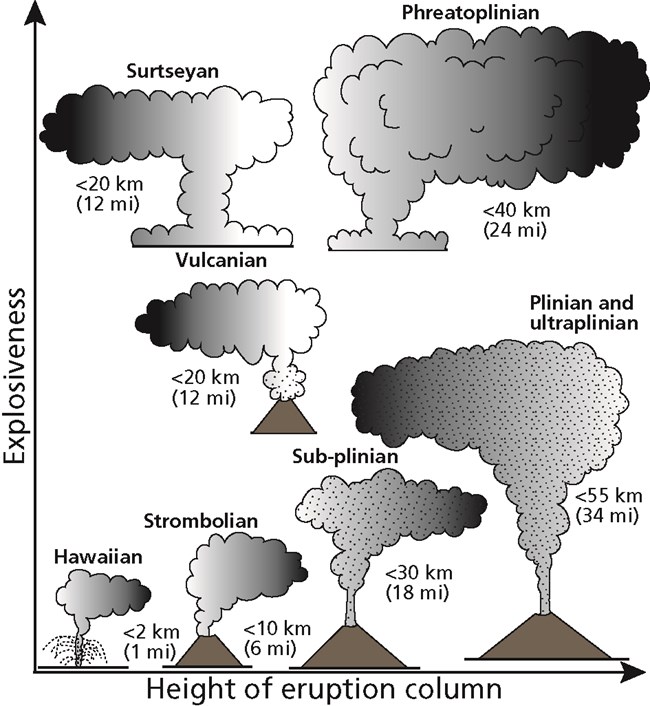
Geologic Resources Inventory Report, Katmai National Park and Preserve and Alagnak Wild River. Graphic by Trista Thornberry-Ehrlich (Colorado State University), modified from Cas and Wright (1988).
This classification is widely used in the volcanological literature, and has been applied to describe the eruptions of national park volcanoes.
Magmatic Eruptions
These magmatic eruption styles are listed in the order of increasing explosivity.
Phreatomagmatic Eruptions Styles
Any eruption will become much more explosive if the magma interacts with groundwater or shallow surface water.
Surtseyan Eruptions
Surtseyan-style eruptions are those that under dry conditions would be erupted in as a Strombolian-type eruption. Surtseyan eruptions typically consist of basaltic magma. This style is named for the 1963 eruption of Surtsey off the coast of Iceland. Surtseyan eruptions often form volcanoes with low edifices such as tuff rings or maars that are made up of pyroclasts that are deposited around the crater.
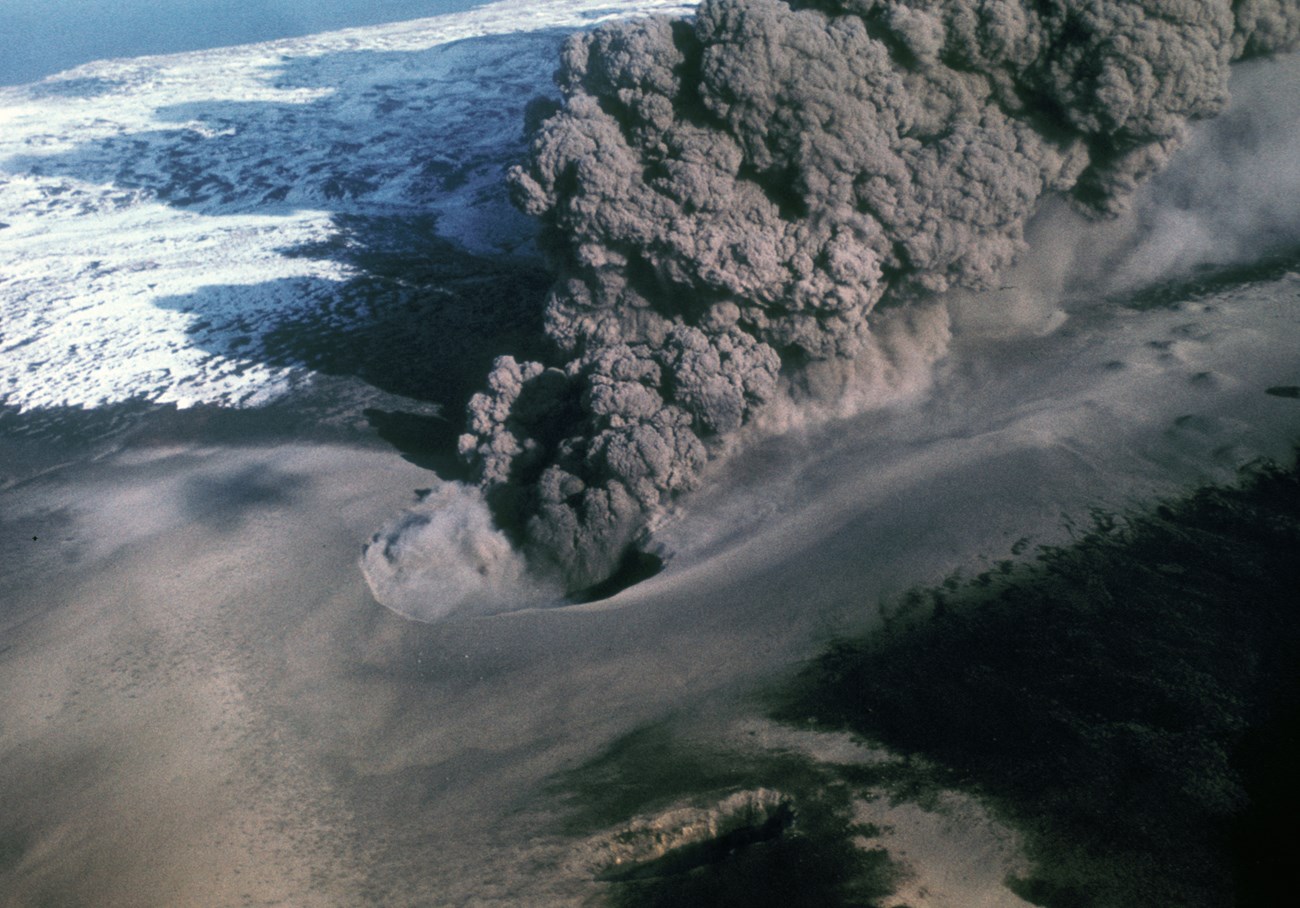
USGS photo by Juergen Kienle.
Phreatoplinian Eruptions
Phreatoplinian eruptions are large emissions of silicic magmas in the presence of abundant external water. Compared to those erupted in the Plinian style, pyroclasts emitted during phreatoplinian eruptions show a greater degree of fragmentation.
Last updated: November 24, 2021

